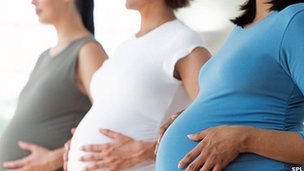A patient called the office, irate because of a medical coding issue that revolved around her age. When we received the phone message from one of the office billing staff, we wondered what on earth the patient could be upset about, as we had routinely referred her to a high-risk specialist (maternal fetal medicine). She was thirty-eight years old and pregnant with her second child. We wanted her to take advantage of genetic counseling, which entails meeting with a high-risk obstetrical physician and a genetic counselor.
These doctors advise patients of the risks based on their age and the chances of them having an infant with a chromosomal abnormality. The information is then used to guide the patient through the decision of whether or not to have a genetic amniocentesis, a process in which some of the fluid surrounding the baby is withdrawn through a needle and sent to a lab for a chromosomal analysis. The baby’s skin cells are removed from the fluid and tested for chromosomal issues.
My patient was upset because she had received her medical bill from the specialist’s office and they had used a bothersome ICD-9 code for the visit. An ICD-9 code is a set of numbers sent to the insurance company to alert them as to why the patient had the visit. In this patient’s case, they used the code V23.82.
“Do you know what a V23.82 is?” she asked. “It stands for Elderly Multigravida ! Elderly?” she questioned, aghast.
A multigravida refers to a woman who has been pregnant more than once, but we think she was more upset with the word elderly, and wouldn’t you be, too? Someone at Medicare must have thought it was a good idea to label women over the age of thirty-five as elderly. It was a bad idea. Fortunately, that code has been changed, and now we use the politically correct term advanced maternal age (AMA) to refer to women over the age of thirty-five.

In the context of fertility, however, thirty-five is not a magical number. There is really only one reason the definition of AMA is cut off at thirty-five. It’s all about chromosomes. The risk of a woman of thirty-five having chromosomally abnormal infant is 1 in 200. The test to determine this, an amniocentesis, discussed above, carries the risk of miscarriage of 1 in 200. Therefore, the risk of the procedure is the same as the risk of the possible diagnosis, so the test can be indicated at that point. Also, the reality is that woman fertility does start decreasing around age thirty, and that’s all about the eggs and the chromosomes within them.
A woman is born with all the eggs she will ever have. These eggs “die off,” so to speak, every day 0f her life. So, when the woman is thirty-five, these eggs have been around for thirty-five years and have been exposed to ambient radiation and all that the environment has to offer. Subsequently they can become damaged and less healthy and thereby less fertile. At the age of thirty-five there is a steep drop, and around age thirty-eight there is another steep decline.
Is infertility a problem for “older” women? Not necessarily. You don’t know until you try. We were fortunate to have two children later in life when Katie was thirty-six and then thirty-nine. The facts show that any woman under the age of thirty has about a 20 percent chance of becoming pregnant each month. A woman over the age of forty has about a 5 percent chance monthly. Also, the fertility rate, which is the amount of births per thousand women with the potential to become pregnant, drops significantly from age thirty-five to forty-five, from 400 per 1,000 exposed women, to 100 per 1,000 women exposed.